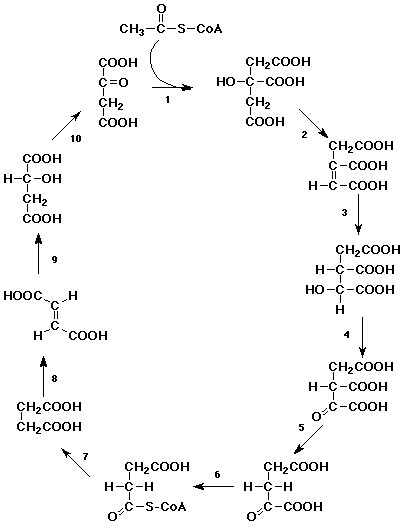![]()
![]()
1. Your textbook illustrates the ten reactions of glycolysis, in which glucose is taken to pyruvate and then to acetyl CoA. In ten more reactions, acetyl CoA is taken to carbon dioxide (the Krebs Cycle).
Examine the ten reactions of the Krebs Cycle and characterize each reaction in terms of the following aspects:
a) Write a balanced reaction and describe the overall process with as much specificity as you can (e.g., oxidation of a secondary alcohol to a ketone).
b) Indicate whether a cofactor is needed. Use NAD+ to oxidize alcohols to carbonyl groups and FAD to oxidize hydrocarbons to alkenes.
c) Indicate any specific stereochemistry in the reactants or products.
d) Write a balanced reaction for the entire cycle, in particular adding up the cofactors that are used and generated.
e) Each equivalent of NAD+ ultimately can create 3 equivalents of ATP and each equivalent of FAD can ultimately create 2 equivalents of ATP. How much ATP can be created from one acetyl CoA? How many from one glucose?
The Krebs Cycle
